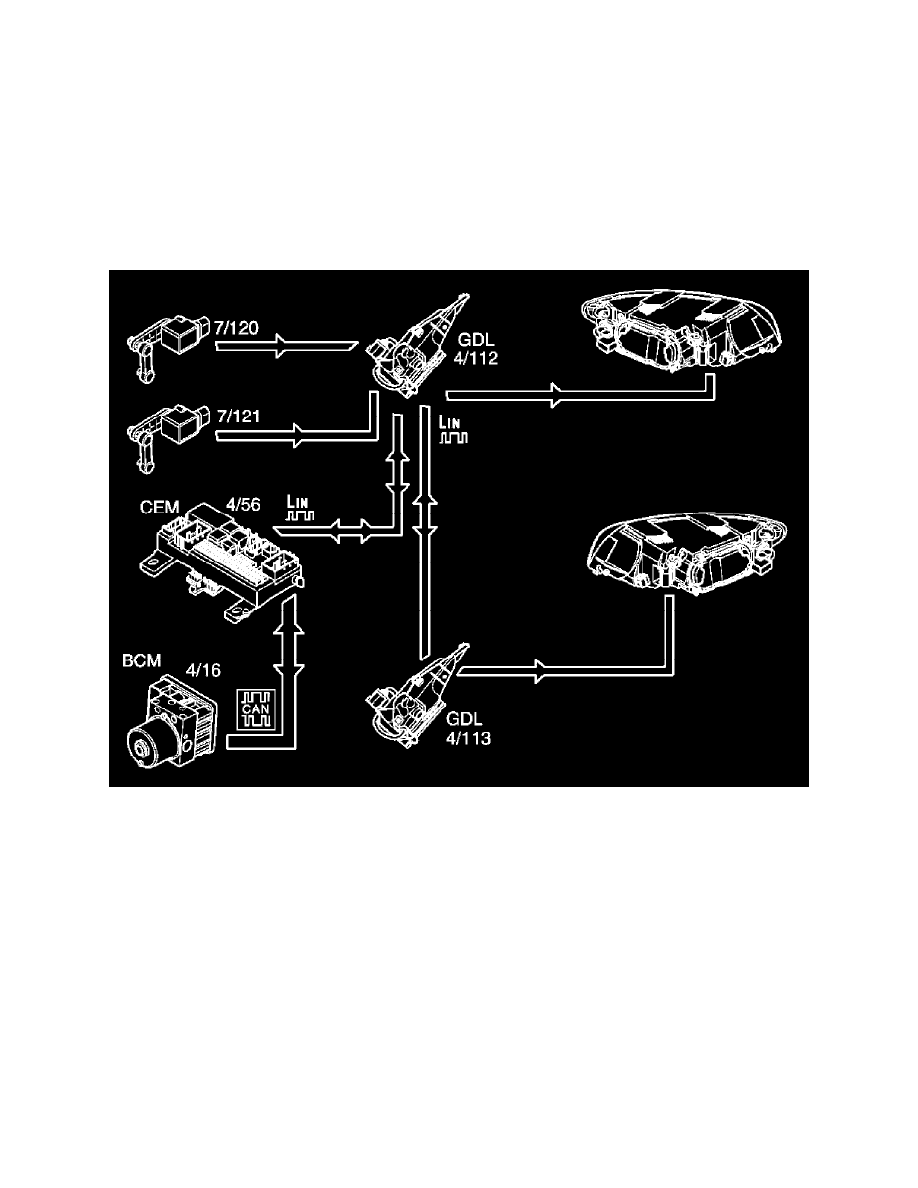V50 L5-2.4L VIN 39 B5244S7 (2005)

(SWM) (3/254) to the central electronic module (CEM), which passes on the request to the "master" gas discharge lamp module (GDL) via LIN
communication.
The "master" module passes on the request to the "slave" module via LIN communication. Both LIN control module regulate the actuator motor
solenoid), which controls the position of the cover so that high beam is obtained for the Bi-Xenon light.
The central electronic module (CEM) also transmits a CAN signal to the driver information module (DIM) (5/1) to light the indicator lamp for high
beam.
There is a Limp Home function which ensures that low beam still works if there is a fault in the control area network (CAN). For Bi-Xenon lamps the
beam is then set to the shortest range.
Automatic headlight levelling
Automatic headlight levelling is controlled by the "master" gas discharge lamp module (GDL). The position sensors (7/120-121) on the front and rear
suspensions transmit signals to the "master" control module (4/112) about the angle of the car in terms of the load conditions.
The "master" control module calculates the relevant angle for the headlights and sends the information to the "slave" gas discharge lamp module (GDL)
(4/113) via LIN communication.
The central electronic module (CEM) (4/56) receives a speed signal from the brake control module (BCM) (4/16) via CAN communication. It then sends
this signal on to the "master" control module via LIN communication. Once the position sensors have transmitted information on a change in vehicle
angle, it takes about 9 seconds until the beam range has been adjusted. If speed is above 5 km/h (3 mph), an average value is calculated. The processed
information is sent to the "slave" gas discharge lamp module (GDL) via LIN communication.
Regulation when the vehicle is stationary
When the ignition is switched on, the position sensors are read and the headlight levelling motors adjust the headlights.
Regulation when the vehicle is in motion
In the event of large angle changes while driving, the headlights are regulated. There is a built-in delay in the system so that it does not react to
momentary changes, such as unevenness in the road surface.
The actuator motors are then operated from the relevant gas discharge lamp module (GDL) via an analog signal, where the signal level is set to the angle
the lamps need to be set to.
